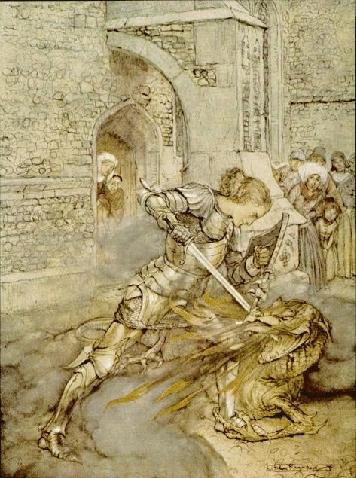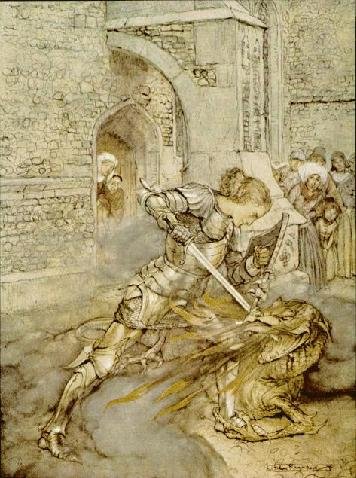
Historical events are said to cast a long shadow, and today, if you will join me on a journey, our Tardis takes us back to the arrival of William, Duke of Normandy, on our shores in 1066 or, if you prefer, all the way to Camelot.
Amongst William’s companions was the Count of Rupierre, ‘Rubra Spatha’ or ‘Red Shield’, to whom he gave a chunk of Derbyshire in gratitude. Over the years, the most successful 1 of these Ropers moved to Kent where Will Ropermarried Margaret, daughter of Thomas More. Skipping a few centuries, we arrive at Henry Roper, 10th Lord Teynham, of Linsted Lodge (1708-1781), who begat Philip who married Barbara Lyttelton by whom he had a son and six daughters, one of whom (Emma Theresa) married Frederick Holbrooke, whose family were gentlemen (as described in his father’s will proved in 1808) and may be descended from the 15th century astronomer and Master of Peterhouse, John Holbrooke. 2
Frederick and Emma Holbrooke in turn had five daughters and one son, the Revd Frederick Holbrooke, who married Henrietta Smith. They had six daughters and four sons: Bernard Frederick Roper (1871-1948), Philip Lancelot(1873-1958), Gerald Howard (1877-1915) and Cecil Dacre M (1879-1909).3
Dear reader, armed just with the above information, I ask you to infer what happened to the four sons and why. I pause, and invite you to do so also.
Shall we start with the why?
Much has been written about the influence of the public schools (The battle of Waterloo was won on the playing fields of Eton) and poets like Sir Henry Newbolt and his Vitai Lampada in fostering a spirit of gung-ho militarism at the end of the 19th and beginning of the 20th centuries.
This is the word that year by year
While in her place the School is set
Every one of her sons must hear,
And none that hears it dare forget.
This they all with a joyful mind
Bear through life like a torch in flame,
And falling fling to the host behind –
“Play up! play up! and play the game!”
Although I am sure this is true, I think there was another equally important factor: the revival of the code of chivalry, as summarised by this reviewer 4 of Mark Girouard’s book5
Around about the time of its wars against the French Revolution and then Napoleon, England witnessed an odd and interesting phenomenon that lasted through the entire 19th century and right up to the end of the Great War: The revival of the medieval code of chivalry, with King Arthur, knights in armor, the notion of courtly love, and all. The ideals of personal bravery and honour, service to the nation, and self-sacrifice reappeared in modified form and helped shape British culture for several generations, not only in art and literature but even in politics.
Sir Walter Scott’s novels had a lot to do with reviving the myth of chivalry (and it was indeed mostly a myth), and so, too, did the paintings of Benjamin West, featuring the Black Prince and other knightly heroes. And Tennyson helped further the new myth in the next generation. There was a new rise of interest in the Middle Ages, but George IV and then the Victorians interpreted that period to suit themselves. Those with the money to build new country homes often opted for what they fancied were medieval-style castles. Prince Albert’s tomb features a reclining sculpture on top depicting the Prince in full armor with his favorite dog at his feet, also in medieval funerary style. Even Baden-Powell promoted his new Boy Scouts in Arthurian chivalric terms.
The whole thing reached its climax with the deaths of Capt. Robert Scott and his companions in Antarctica early in 1912 (especially Capt. Oates, who “walked out to his death an English gentleman”) and with the sinking of the TITANIC later that same year. Many of the English males aboard politely helped their wives and other women into the lifeboats and then stepped back, content to go down with the ship… And just to round out 1912, there was also a jousting tournament at Earl’s Court, in which a dozen aristocrats donned armor and went at each other with lances.
And as for the what?
For that, dear reader, you will have to wait (not too long, I promise) for the next episode 🙂
But the connection with St Mary Bourne, I will tell you, is that for many years the Revd Frederick Holbrook was Rector of Kimpton, and that after his death his widow and the remaining children living at home moved to Stoke House.
1 My knowledge of the Roper family lies in my own descent from the ‘no-hoper Ropers’ (sorry, cousins!) who remained in Derbyshire and did not go on to make a fortune.
2 see Oxford University Press Keith Snedegar, ‘Holbroke , John (d. 1437)’, Oxford Dictionary of National Biography, Oxford University Press, 2004 [http://www.oxforddnb.com/view/article/13482, accessed 4 Oct 2014] John Holbroke (d. 1437): doi:10.1093/ref:odnb/13482 ]
3 As we have seen, Roper was one of the landed gentry families of England. Lancelot was a knight of the round table, The family name of the Barons Dacre is Trevor-Roper, and the Dacres married into the Howard family, who became Dukes of Norfolk.
4 Review of Mark Girouard book
5 See The Return to Camelot: Chivalry and the English Gentleman by Mark Girouard



